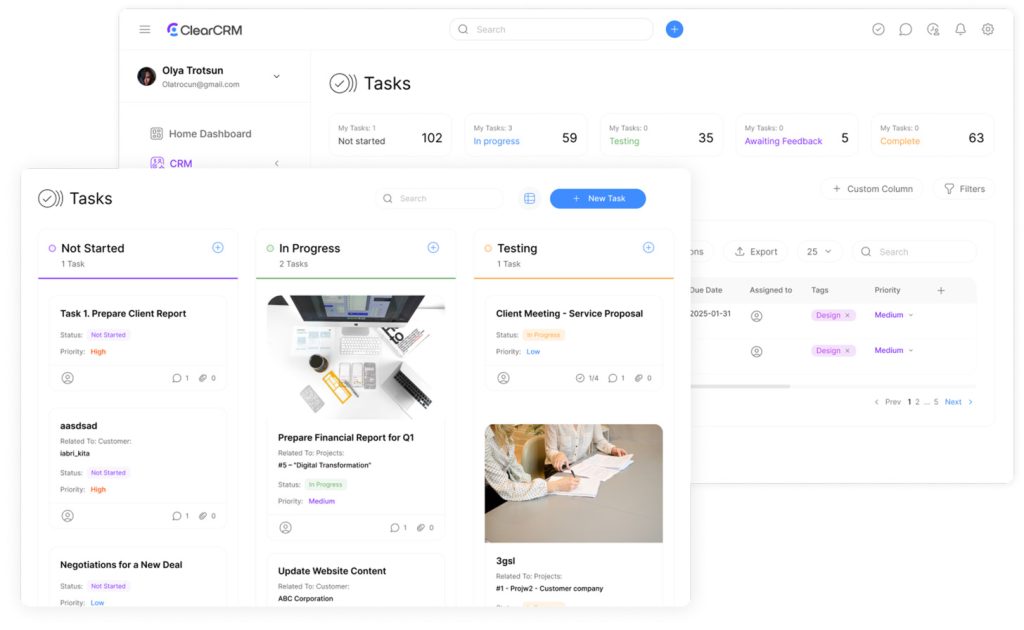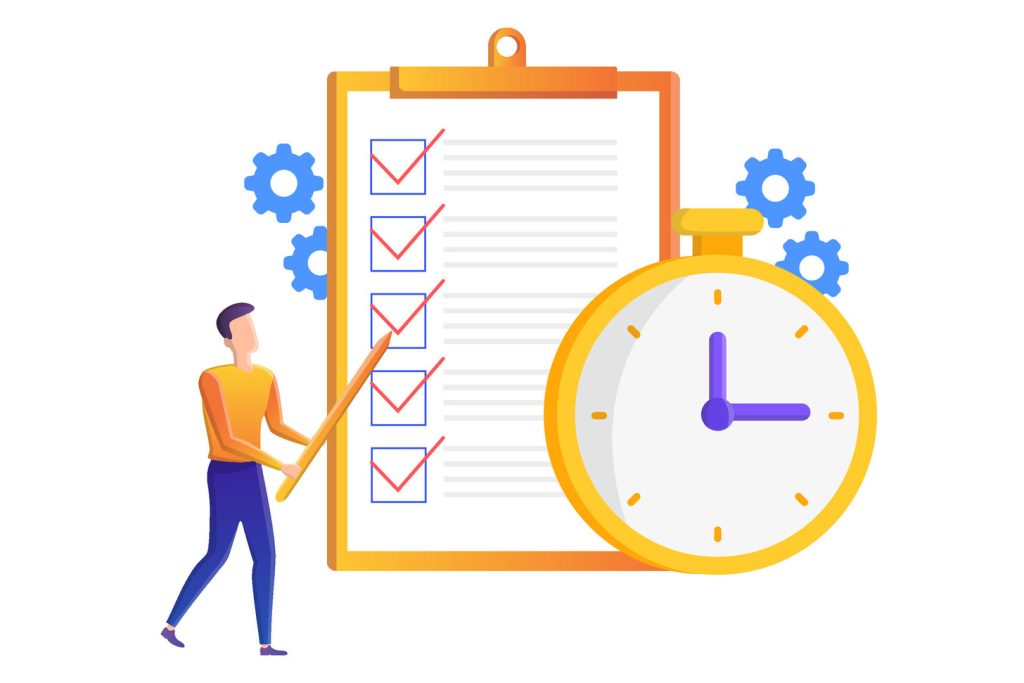How to Manage Recurring Tasks Effectively Today

Recurring tasks pose a critical challenge for modern businesses: handling repetitive work that demands regular attention. Daily, weekly, or monthly activities like reporting, inventory checks, or client follow-ups consume valuable time. Without a structured approach, these responsibilities create bottlenecks and drain team productivity.
Automated systems now offer practical solutions for scheduling and tracking repetitive work. Digital platforms eliminate manual oversight by sending reminders, assigning responsibilities, and monitoring progress. This shift reduces errors and frees employees to focus on high-value projects instead of routine duties.
Strategic implementation of these tools creates scalable processes that grow with an organization. Teams maintain operational consistency while adapting to new demands. By prioritizing intelligent workflows, businesses minimize mental fatigue and build resilience against operational disruptions. Incorporating task prioritization techniques for success ensures that teams can focus on high-impact activities that drive results. This alignment not only enhances productivity but also fosters a culture of accountability and continuous improvement. Ultimately, organizations that leverage these strategies position themselves for sustainable growth in an ever-evolving landscape.
Key Takeaways
- Systematic approaches prevent bottlenecks in daily operations
- Automated tools reduce manual effort in tracking responsibilities
- Digital platforms improve accuracy for regular workflows
- Consistent processes help teams adapt to changing priorities
- Scalable systems support long-term organizational growth
Understanding the Importance of Recurring Tasks

Consistent processes form the backbone of successful organizations. Regular operations like inventory audits and client updates demand systematic handling to prevent operational gaps. When managed effectively, these repeat activities become strategic assets rather than administrative burdens.
Benefits of Automating Task Management
Automated systems transform how teams approach regular responsibilities. By handling scheduling and tracking, these tools eliminate manual oversight while improving accuracy. Predetermined schedules ensure critical actions occur at the right frequency without human intervention. Additionally, automated systems can significantly enhance collaboration among team members by providing real-time updates and notifications. This streamlining of processes can be particularly beneficial in sales environments, where task automation for deal stages allows for more efficient progression from lead generation to closing. As a result, teams can focus on strategic planning rather than getting bogged down in routine tasks.
Impact on Team Productivity and Workload Reduction
Workforce efficiency improves dramatically when staff shift focus from routine execution to value-driven projects. Cognitive load decreases as employees no longer juggle multiple deadlines manually. This mental space allows for innovative solutions and rapid response to emerging priorities.
| Aspect | Manual Process | Automated System |
|---|---|---|
| Time Allocation | High (45 mins/day) | Minimal (5 mins/day) |
| Error Rate | 15% average | 2% average |
| Scalability | Limited by staff capacity | Handles 10x more occurrences |
Organizations using automated task management report 68% faster completion rates for repeat workflows. Teams maintain continuity during staffing changes through predefined options for responsibility reassignment. By implementing automated task management, organizations can not only enhance efficiency but also ensure that team members are better equipped to handle transitions. Additionally, utilizing effective task creation strategies for managers allows for a smoother onboarding process for new staff, as they can quickly adapt to standardized workflows. This alignment not only boosts morale but also contributes to sustained productivity levels across the board. Moreover, integrating the best CRM for task management can further streamline operations by providing centralized access to project updates and deadlines. This transparency fosters collaboration and accountability among team members, ensuring that everyone is aligned with organizational goals. By leveraging these advanced tools, companies can also make data-driven decisions that lead to continuous improvement in their processes.
Setting Up Your Recurring Tasks

Establishing a reliable system for regular duties requires precision and adaptability. Google’s productivity suite offers robust tools that simplify scheduling while maintaining flexibility for changing priorities. By integrating Google Calendar with tasks and reminders, users can easily visualize their responsibilities and allocate time effectively. Additionally, using top task management solutions like Google Keep or Google Tasks allows for seamless organization of projects and collaboration with team members. This combination ensures that individuals and teams can stay on track, even when faced with unexpected challenges.
Creating Automated Cycles in Google Tasks
Begin by opening the app and selecting an existing item or generating a new task. Tap “Add date/time” followed by the repeat option to activate automated scheduling. Choose daily, weekly, or monthly patterns that match operational needs.
Critical settings include:
- Frequency selection (day/week/month/year)
- End conditions: specific end date or number of occurrences
- Indefinite continuation for ongoing processes
Tailoring Schedules in Google Calendar
For time-sensitive activities, edit existing entries or establish fresh ones through Calendar’s interface. Select the date field and modify the “Does not repeat” default to preferred intervals. Teams can:
- Use preset frequencies like every week
- Design custom patterns with exact due dates
- Sync multiple timelines across departments
Advanced customization supports multi-layered projects requiring staggered deadlines. Cross-platform functionality ensures updates reflect instantly on mobile and desktop views, maintaining alignment between field staff and office teams.
Managing and Editing Recurring Tasks
Importantly, adaptable systems distinguish high-performing teams from those stuck in rigid workflows. Meanwhile, digital tools now provide granular control over scheduled activities, letting teams refine timelines and adjust priorities as needs evolve.
Editing Task Details and Adjusting Dates
Google’s platforms enable quick adjustments through intuitive interfaces. To modify a series, tap any item and access the repetition settings at the bottom of the screen. Teams can:
- Shift dates for individual entries without breaking the sequence
- Extend end dates for ongoing projects
- Update descriptions or assignees mid-cycle
Calendar users select the “Edit” option to revise time slots or frequency patterns. Custom occurrences accommodate seasonal changes, while bulk edits apply adjustments across multiple timelines.
Marking Tasks as Complete and Stopping Repetition
Completion triggers automatic generation of the next instance, maintaining workflow momentum. Teams using Google Tasks simply check the box to archive finished items and activate subsequent entries. Critical considerations include:
- Historical records of completed work for audits
- One-click cancellation for obsolete series
- Automatic sync across devices upon changes
Important: Once a sequence stops, teams must build a new task series rather than restart old patterns. Shared items and subtasks lack repetition options, requiring manual recreation for collaborative workflows.
Best Practices for Recurring Tasks Management

Ultimately, organizations achieve peak efficiency when they master regular operational rhythms. Moreover, strategic approaches prevent schedule conflicts while maintaining team agility. Specifically, these methods address platform limitations and workforce dynamics through intentional design.
Solutions for Frequent Operational Hurdles
Typically, common issues arise when daily processes exceed team capacity. To mitigate this, effective managers allocate buffer periods between due dates to absorb delays. In turn, priority ranking systems help teams focus on high-impact actions first.
| Challenge | Impact | Solution |
|---|---|---|
| Calendar visibility limits | Missed deadlines | Supplement with weekly review meetings |
| Unmovable task lists | Process rigidity | Use color-coded series labels |
| Irreversible repetition stops | Workflow breaks | Document templates for quick restarts |
Maintaining Uniformity in Schedules
Standardized naming conventions prevent confusion across departments. Teams using date-based prefixes (e.g., “Q3-ClientCheck”) reduce mismatched priorities. Centralized dashboards display all active tasks with their frequency settings.
Monthly audit cycles identify redundant processes. Leaders adjust repetition patterns based on completion rate analytics. Cross-training ensures multiple staff members can manage critical series when primary handlers are unavailable.
Conclusion
Mastering regular workflows separates thriving organizations from stagnant competitors. Businesses that automate repetitive processes gain operational clarity while minimizing human error. Tools like Google Calendar and Tasks provide intuitive platforms to set repeat patterns and track progress across teams.
Effective systems begin with clear due dates and smart frequency settings. Selecting the every week option or custom series ensures responsibilities align with operational rhythms. Teams maintain momentum through automated reminders while retaining control via menu adjustments when priorities shift.
Success demands balancing structure with adaptability. Regular reviews of dates and completion rates help refine schedules. When unexpected changes occur, modifying a single instance preserves workflow continuity without disrupting the entire list.
Organizations that implement these strategies build resilient operations ready for scaling. Freed from manual tracking, teams redirect energy toward innovation and strategic growth. The result? Sustainable efficiency that evolves with market demands.

